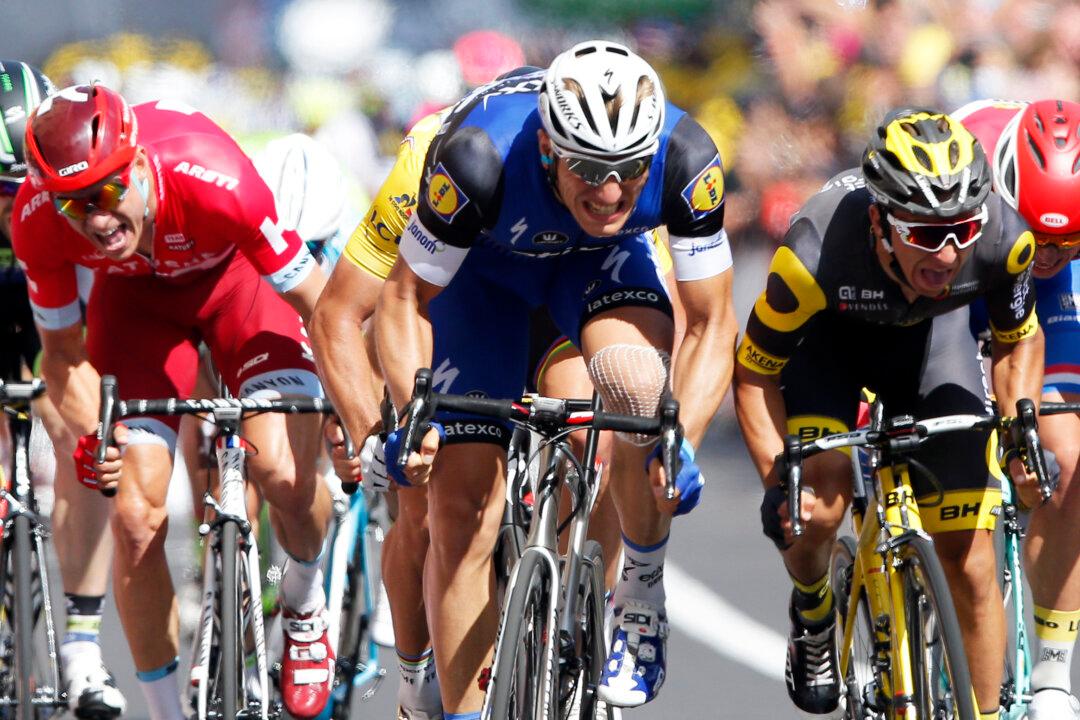Stage Four of the 2016 Tour de France ended with another uphill sprint, half as long but even steeper than the one ending Stage Three the day before.
The experts predicted that the power-sprinters would win: Lotto-Soudal’s André Greipel, Tinkoff’s Peter Sagan, Etixx-Quickstep’s Marcel Kittel, and Dimension Data’s Mark Cavendish were named as favorites.
Lotto-Soudal set things up well for Greipel but ran out of firepower just under the One-Km banner. Katusha brought Alexander Kristoff to the front, passing the Lotto-Soudal train, and Kristoff was the first to start his sprint, with Greipel on his shoulder, but the big German faded.
Marcel Kittel came up on Kristoff’s left and passed him. Peter Sagan charged after Kittel but ran out of steam; then Bryan Coquard of Direct Energie charged past Sagan and caught Kittel.
Coquard and Kittel ran side by side—and elbow to shoulder, as the pair got a bit physical—through the final few dozen meters, crossing the line too close together for the winner to be called.
It took two analysis of two different finish-line photos to establish that Etixx-Quickstep’s Marcel Kittel won his ninth Tour de France stage by about a centimeter, with Bryan Coquard and Peter Sagan filling out the podium. Sagan keeps the yellow.
Kittle won four Tour stages in 2013 and 2014 but didn’t make the team for the next two years. He fought his way back onto the Tour squad and proved his worth in Stage Four.
“I am very emotional,” Kittel told NBCSports. “This feels like my first stage win again. My team was fighting so hard for this win.
“I am so happy to be back in the Tour and to win a stage, especially like this where it is uphill. I am so happy to win again—I can’t believe it.”






